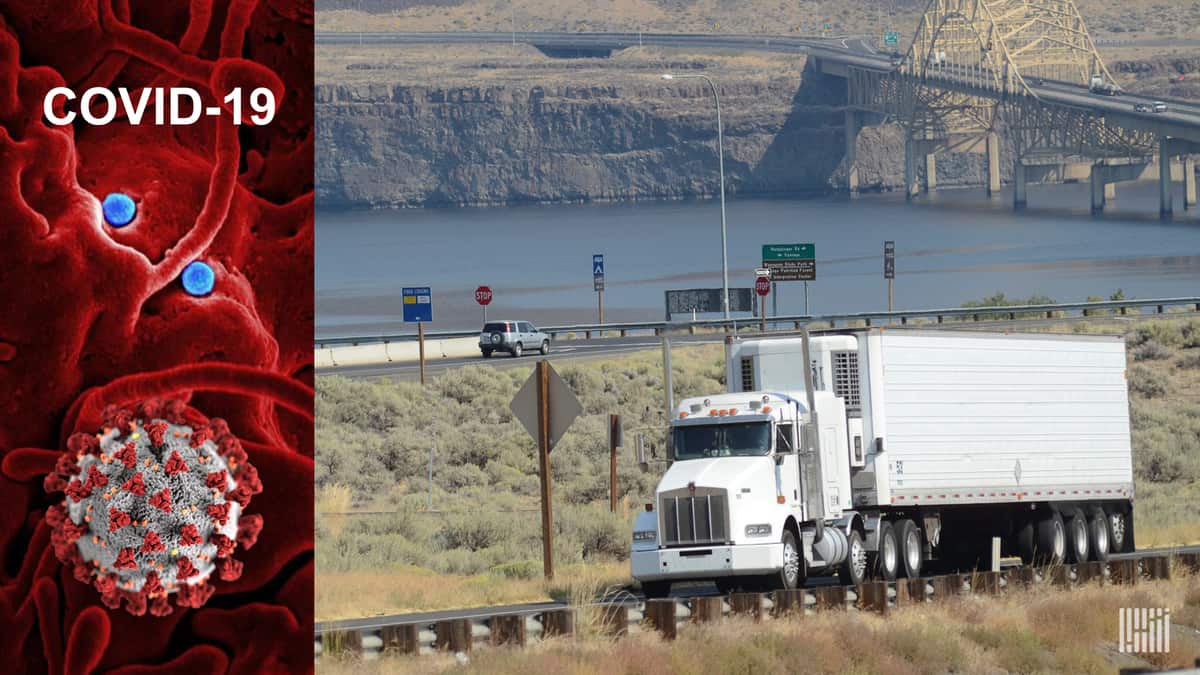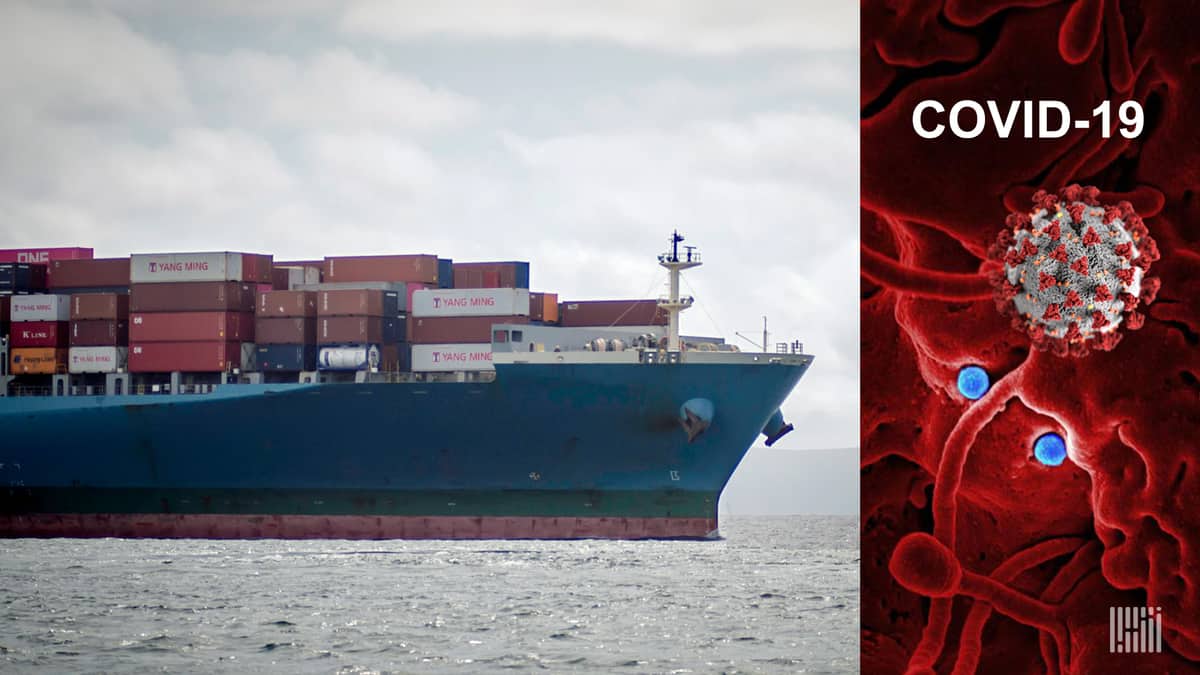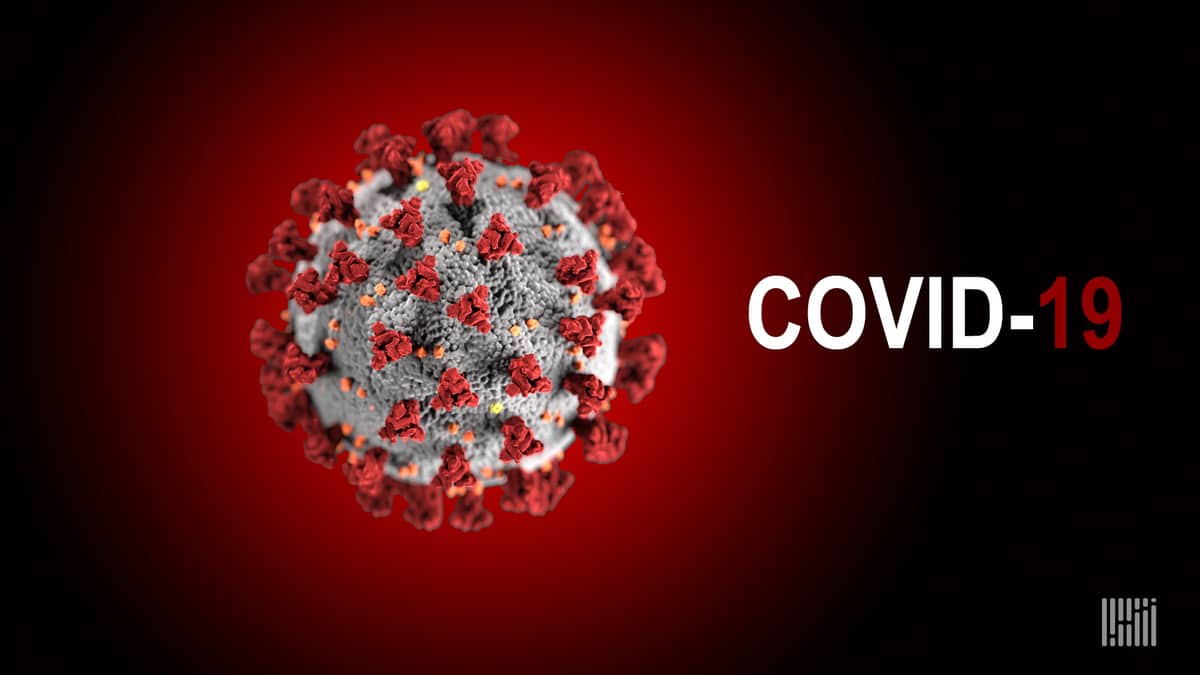The views expressed here are solely those of the author and do not necessarily represent the views of FreightWaves or its affiliates.
During times of crises and high uncertainty, the best approach to problem-solving brings together the strengths of centralized organizations with the strengths of decentralized and grassroots-driven communities.
The outbreak of SARS-COV-2 and COVID-19 is one such instance.
As of 10:00 a.m. EDT on Tuesday, April 14 in the U.S, the John Hopkins University Center for Systems Science and Engineering reported that:
- There are 1,934,583 total confirmed cases of COVID-19 and 120,914 total deaths worldwide.
- There are 547,627 total confirmed cases of COVID-19 and 21,662 total deaths in the U.S.
- New York State accounts for 189,033 confirmed cases of COVID-19 and 9,345 deaths respectively.
This crisis has exposed weaknesses in global supply chains for personal protective equipment (PPE) and other critical healthcare and medical supplies. It has also revealed how critical supply chains are to the smooth functioning of the economy, and society in general.
In this commentary I will:
- Explore the problem of getting large and centralized organizations to collaborate with small and decentralized organizations during periods of uncertainty.
- Describe what I am observing at the grassroots as the COVID-19 crisis is unfolding.
- Suggest some solutions that are based on my observations.
- Highlight some successes that give me reason for hope.

Defining the problem – centralized organizations vs. decentralized communities
On February 18, 2018 I published #ChainReaction: Notes on Centralized, Decentralized and Distributed Systems on my personal blog. The question I set out to investigate for myself when I began doing the research that led to that blog was this: “Under what conditions does decentralization perform better than centralization? Why does this happen?”
The bottom line – centralization underperforms when:
- There’s new and ambiguous information that needs to be processed, analyzed and acted upon quickly – the decision-making process must be sped up and uncertainty is increasing,
- Conditions are dynamic and evolving, requiring freedom to admit and collaborate with new partners and create new alliances quickly in response to changing conditions.
- The realities of the situation demand agility and flexibility.
Centralization further underperforms when there is uncertainty and the stakes are high.
For example, when the whole world is confronting a pandemic that has almost brought supply chains around the world to a halt because of country-wide lockdowns as national governments scramble to stem the progress of infections caused by SARS-COV-2.
This happens because the costs of failure for a centralized organization are much higher than they are for the typical decentralized organization. As a result decision-makers in large, centralized organizations can become frozen-in-place as the personal costs of making the wrong decision become too costly for the average person to bear. To outsiders, it can appear that such inaction is due to incompetence, or an outright dereliction of duty. That is often a false conclusion.
Insights from the field – what grassroots communities are experiencing as they try to help
The severe shortage of personal protective equipment (PPE) spawned the hashtag #GetMePPE on Twitter with doctors and nurses making direct, personal appeals to ordinary citizens to assist them in obtaining PPE because they are not being provided PPE by the hospitals at which they work. Moreover, reports in the media suggest that in some cases doctors and nurses are being fired for speaking up about the lack of PPE. On the other hand, administrators and politicians seem to paint the picture that there’s adequate supply of PPE. It’s a discrepancy that is difficult to understand. Here’s one such example.
Since Friday, March 20, my co-founder, Lisa Morales-Hellebo, has been working with some of the members of The New York Supply Chain Meetup (#TNYSCM) and The Worldwide Supply Chain Federation (#TWSCF) to organize and coordinate an effort to create a repeatable and scalable platform to match demand for PPE with the local and international PPE supply. #TWSCF and #TNYSCM are joined in that effort by several other organizations, mostly startups that are already independently executing different pieces of the overall capabilities such a platform requires in order to fulfill its function.
The reports we have heard from people organizing other grassroots efforts, internationally and across the U.S., aimed at alleviating the lack of PPE is the same – working with government agencies and hospital administrators is painfully slow. As a result, most grassroots organizations that we have heard from have resorted to dealing directly with individual nurses and doctors, delivering PPE that is obtained through donations made by citizens.
That is suboptimal because it does not scale to meet the magnitude of this crisis.
In the meantime, desperately needed PPE is not showing up in quantities large enough for the medical personnel being deployed to the front lines. In other words, we are sending doctors and nurses, inadequately armed, into a fight to the death. Moreover, in New York City (and perhaps elsewhere), the police force and the fire department are also being ravaged by COVID-19. Other media reports indicate that health workers are falling sick after contracting the virus due to the lack of PPE.

The outlines of a solution – harnessing the power of the starfish
In Commentary: Is 2020 the year of supply chain risk?, which ran on FreightWaves on March 5, I described the starfish organization – a decentralized organization that is capable of regeneration and restoration when any one of its nodes is destroyed or cut off from the parent organization. A starfish gains from disorder, chaos and uncertainty. In this formulation, the opposite of a starfish is a spider.
The current crisis calls for organizations and teams that are accustomed to functioning like a starfish. In this context, those are mostly new grassroots-driven organizations.
Here are three observations about how government agencies and other large, mature and centralized organizations could unleash the entrepreneurialism, creativity and ingenuity that resides in nascent grassroots organizations in the U.S. to meet the challenge presented by this crisis.
1. We must scale domestic production and manufacturing
While large organizations and large companies have moved operations to China and other countries seeking cheaper labor for manufacturing, there are many grassroots organizations and startups that have had to rely on local manufacturing in the U.S.
Grassroots organizations can identify these sources of local manufacturing capacity more easily. This localized manufacturing capacity, and the supply chains that exist to support it, must be quickly scaled-up as a matter of urgency to meet the needs of the current crisis. Doing so will require collaboration between organizations that are not historically accustomed to collaborating with one another.
How would this work in practice? Preliminary identification and vetting would happen through the grassroots organizations and startups. Responsibility for expedited checking, compliance reviews, and approvals for final purchase would remain with government agencies and hospitals.
Quickly scaling up domestic PPE manufacturing capacity is an essential component of any effort to counteract the rolling lockdowns and export restrictions being put in place by anxious governments around the world that are causing global supply chains to seize up all at once and contributing to the scarcity of PPE supply.
Some of our sources point out that China accounts for about 50% or more of global manufacturing and supply of PPE. I do not debate that sourcing PPE from China must remain part of the strategy for every hospital and government agency seeking to solve this problem. However, there’s that other 50% that comes from suppliers and manufacturers outside China. It is only expedient to explore those other sources of PPE as an alternative, in addition to quickly scaling up domestic manufacturing.
Engaging with grassroots organizations can help create multiple points of capacity redundancy.

2. Centralized agencies and large companies must speed up decision-making
As I have already pointed out, in large centralized organizations, response speed is a big problem – especially when things are uncertain. I understand that government agencies, hospitals and other such organizations have a certain sourcing and procurement process they have designed and implemented over many years. However, those processes and procedures were not designed for periods of crisis. They certainly were not designed for a rapidly evolving and dynamic crisis of this scale and magnitude, when there’s a need to move fast.
In operations management, project crashing is a technique used to reduce the amount of time required to complete a project. Crashing is accomplished by devoting more resources to the project or reducing the scope of the project. This is a concept that must be embraced by the centralized organizations responsible for managing the response to this crisis. Moving fast in the face of uncertainty is something that startups and young grassroots organizations tend to do much better than large organizations.
PPE needs to be sourced in a matter of hours, not days or weeks. Orders need to be placed just as quickly. Deliveries need to start being made in a matter of hours, or a few days, at most.
Supplies need to be secured for as long as is necessary to beat COVID-19. The sourcing and procurement process for PPE needed to aid the medical personnel at the frontlines must be accelerated considerably without compromising public safety or the efficacy of the healthcare system, without ignoring or violating compliance requirements, and without putting people at risk.
I have lost count of the first-hand stories I have heard of people with direct personal PPE supplier relationships who have been met with total silence after they have passed that information on to hospital administrators they know, asking if they could do anything to help start a dialogue between the supplier and the hospital.
Grassroots-driven organizations can help, but to do so they need some of the red-tape that makes them ineffective at working with large centralized bureaucracies to be temporarily removed. A level of creativity and out-of-the-box thinking normally uncalled for under normal circumstances must be the order of the day during a time of crisis.
As I have already pointed out, during times of crises, inaction within large, centralized and bureaucratic organizations is not due to incompetence or an outright dereliction of duty. It is a function of a fear of failure. At such times one responsibility of leadership is to give people the freedom to explore and try unconventional solutions without fear of retribution if things don’t work. People must be freed to experiment. One way to do that is to partner with grassroots organizations that exist outside the boundaries of the mature organization.

3. To beat COVID-19, organizations of all sizes must embrace extreme collaboration
Surviving periods of extreme uncertainty such as the one the whole world currently faces requires degrees of flexibility and agility that are not familiar to, or even comfortable for, the people and organizations that seek to collaborate with one another towards finding a common solution.
However, time is of the essence, and because every sector of the economy is experiencing simultaneous supply and demand shocks, we must think creatively about what is necessary and sufficient for solutions to the problems we must solve to be implemented on a trial basis. Only if such experiments work should they then be scaled for broader application.
Here are just four examples #TWSCF and other grassroots community organizers like us have already encountered:
What are the minimum acceptable standards for PPE that may serve as alternatives to PPE products that have been approved for use under normal conditions but that are currently in short supply?
- The long-standing relationships and processes that characterize the manner in which hospitals, government agencies, and other large, centralized organizations have historically obtained the supplies they need do not fit during a dynamic and rapidly evolving crisis, much less for a pandemic such as this one. What new relationships should such organizations cultivate to enable them to respond more quickly to this crisis and to others that may occur in the future?
- Organizations that bear a fiduciary obligation to their stakeholders should not abdicate that responsibility. Yet, is there room for flexibility, in say, the negotiated payment terms with suppliers, given that sources of working capital that may have been available to these suppliers under normal circumstances are unlikely to be as readily available during this crisis? Anecdotally, and through the media, we have heard about doctors and nurses who have been warned, suspended or fired for accepting peer-to-peer donations of PPE. I understand the desire for hospitals to protect themselves from potential litigation. However, people are dying. Medical personnel need PPE.
- Our experience, and what we have heard from some others, is that philanthropists and donors insist on working or collaborating exclusively or mostly with non-profit organizations even if such non-profit organizations are not necessarily best positioned to solve the problems that must be solved to beat the COVID-19 crisis. Often these non-profits do not have the knowledge, relationships or networks required to solve the problem they have set out to solve.
If there are regulatory and policy reasons for this hesitation, could policy makers at the state and federal level pass a temporary dispensation to existing regulations so that this hurdle does not remain an obstacle to the collaboration that is required?
One comment we have heard a few times is that the people who want to aid in the effort to get PPE to organizations and people who need it should do so on a volunteer basis. Given the current unemployment situation in the U.S. it seems to me that is not a sustainable approach. One only needs to read about the surge in demand food banks around the U.S. are experiencing to realize that appeal is unlikely to meet receptive ears in the current environment, no matter how much the average person wishes they could help.
There’s definitely a need for non-profit and volunteer efforts, and there’s a desperate need for donations too. However, those efforts should not preclude for-profit organizations from joining the push to overcome COVID-19 IF their status as a for-profit organization is indeed the only hurdle.
I understand the concerns about the potential for price-gouging and profiteering. However, there are relatively simple ways to solve those problems. The U.S. Department of Justice issued these guidelines, and the NYC Department of Consumer and Worker Protection issued this emergency rule which is further outlined here.
It’s easy for me to make these observations; I have worked at a large, multinational company with more than 100,000 employees. I have worked at a company with about 30,000 employees, and another with about 5,000 employees – both with operations around the world. In 2008, I joined a company where there were only two employees when I joined – and I was employee number two.
Lisa and I started The New York supply Chain Meetup and then The Worldwide Supply Chain Federation from scratch, in 2017 and 2018 respectively. We started building REFASHIOND Ventures, also from scratch, in late 2018.
I know the invisible hurdles that exist in organizations of different sizes. None of this is easy to execute in the midst of an unfolding crisis. But we must try. We need to take the best of each type of organization and direct that combination towards overcoming this crisis.

Wrapping things up – it’s not all doom and gloom, there are many reasons to be hopeful
Despite my very evident frustrations, there are signs of hope.
Here are a handful of examples:
- The Tandon School of Engineering at New York University, is responding to the crisis in a number of ways including the development of alternatives to mechanical ventilators by a rapid response team, and the development of a new, easy to produce, and low-cost alternative to conventional face shields.
- In COVID-19 Changed How the World Does Science, Together which ran in the New York Times on April 1, with an update on April 14, Matt Apuzzo and David D. Kirkpatrick report on the collaborations taking place across national boundaries as scientists and other public health experts seek prophylactic and therapeutic countermeasures to SARS-COV-2 and COVID-19.
- Flexport is reporting success securing donations and striking partnerships to enable it secure supplies of PPE for medical personnel, as Susy Schöneberg, Head of Flexport.org writes in: PPE and Partnerships: Businesses and Communities Working Together in the Face of COVID-19.
- MIT’s COVID-19 Challenge is a series of challenges to empower people to take action on the COVID-19 crisis.
- Grassroots organizations with far less in the way of resources compared to NYU, Flexport and MIT, are finding creative ways to gather donations and obtain PPE that is then delivered by volunteers to medical personnel who need it. As I have already pointed out, this is not ideal, but rather than making excuses, grassroots organizations are finding workarounds to the roadblocks that they encounter.
Nascent organizations and communities struggle to collaborate with highly centralized, large and mature organizations of any kind. Those difficulties are often greatly amplified when we must collaborate with agencies of government. Worse yet, those fissures, stresses and differences can be exacerbated in times such as those the world is experiencing now, because as Charlie Warzel points out in this op-ed that ran in the New York Times on April 13, When Will Life Be Normal Again? We Just Don’t Know.
Centralized, large and mature private organizations and public agencies possess the power and influence that is required to effect change at a scale nascent organizations could not even dream of. However, young and developing grassroots communities naturally possess the speed, ingenuity, flexibility, networks, and hard-to-find information and knowledge that help them survive as they grow. Those qualities can be a great asset to society in times of crises and uncertainty if the two types of organizations can find ways to work symbiotically with one another.

Over the long-term, supply chain problems are a national security issue. They are also about creating jobs, and strengthening the foundation of the U.S. economy. My co-authors, Craig Fuller, Lisa Morales-Hellebo and I allude to this in “An open letter to the Supply Chain Caucus of the U.S. House of Representatives.” Once this crisis is behind us, we look forward to a robust and energetic national discussion that transcends political chasms, about how the U.S. maintains its competitiveness through supply chain innovation, and prevents another scenario such as the one we are living through from being repeated in the future.
If you are a team working on innovations that you believe have the potential to save lives during SARS-COV-2 and COVID-19, we’d love to tell your story in FreightWaves. I am easy to reach on LinkedIn and Twitter. Alternatively, you can reach out to any member of the editorial team at FreightWaves at [email protected].










